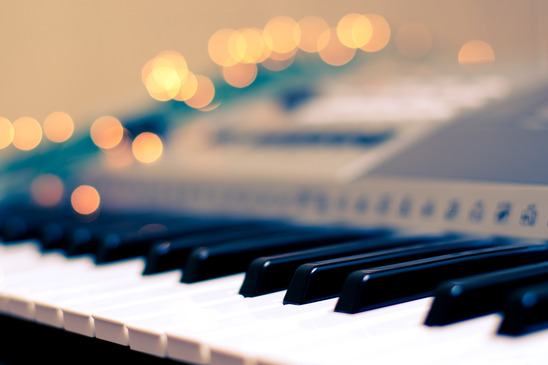Sometimes an acoustic piano simply won’t work.
Maybe your child is just as interested in football as he is in becoming the next famous rock star. Do you really want a serious investment in something that he might drop in a year? Or maybe your child is off to college soon, and there is no way he can practice his new-found skill by bringing an upright or grand piano with him.
What matters most is size, portability and space – and the best sound possible that goes with it.
That’s why digital pianos are a welcome addition to the piano world.
Digital pianos aren’t like their electric keyboard counterparts – remember the 44 key Casio keyboards from yesteryear? Though they may have had some resemblance to a piano, they sounded or acted nothing like it.
Today’s digital pianos feature fully weighted keys to mimic the functionality of an acoustic piano, have life-like reverb effects, and have sound that compares to some of the most beautiful grand pianos in the world.
What should you look for in your in the market for a digital piano?
Always stick with the standard 88 key setup. You will find cheaper, lower quality pianos with lower key counts, but they may limit your playing of some songs. And while there are pianos with more keys, outside of a true professional that understands how to use them, you’ll probably never use the additional keys anyway.
In our world, more is always better, right? Hundreds of instruments. Thousands of unique sounds. It sounds like a dream; something you just have to have. Its important to note that more sounds don’t lead to higher quality. And for most players, they simply will never use even a fraction of those sounds anyway. Focus on quality. Does it have a rich sound? Sound is what is important, not how many bells and whistles it has.
Polyphony is the number of individual notes a digital piano can produce at one time. If you’ve ever played a small child’s keyboard toy, when you hit multiple notes at once, you’ll only hear one sound coming out – not a smooth chord with multiple rich notes at one time. This keyboard would have a polyphony of one. To have an efficient digital piano, anything less than 32 note simply won’t give you the tone to make music with. 64 is considered acceptable; 128 is typically best.
Touch is also an important feature, and one that easily tricks parents who don’t play the piano themselves when it comes time to buy one for their kids. Its easy to be swayed by lights and dials, and ratings based on marketing rather than performance. To truly learn how to play the piano, the piano must act like a piano to transfer the skills from one type to the next. Touch response comes from being able to press down on a key and feeling a building resistance as the hammer strikes the piano’s strings to make a sound. When keys are weighted correctly, it imitates the feel of an acoustic piano, meaning your skills are easily transferred from one to the next, and the proper performance can be achieved by playing by feel.
Still have questions? Come in today. We would love to help you experience all a digital piano can provide.


